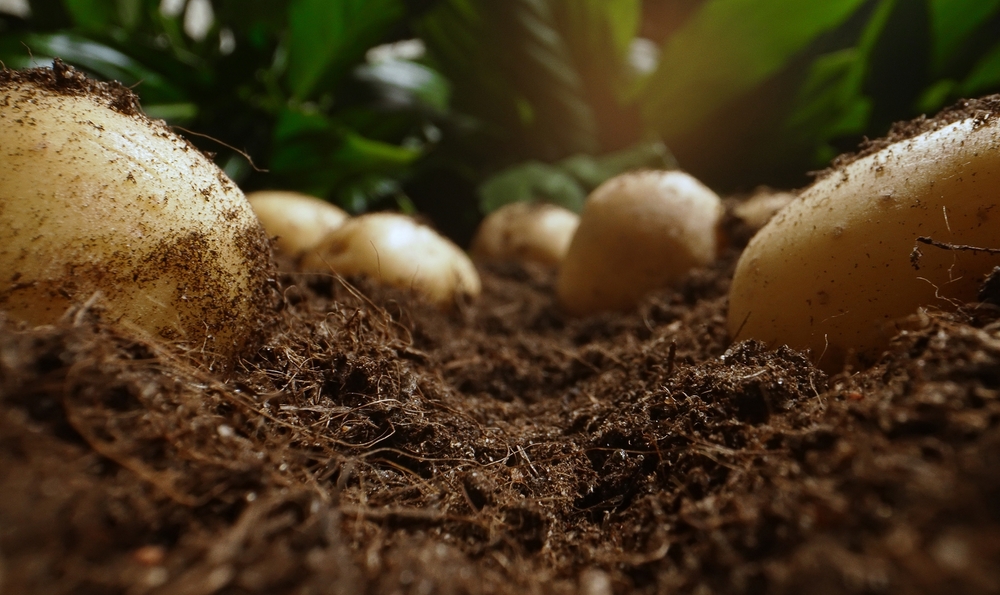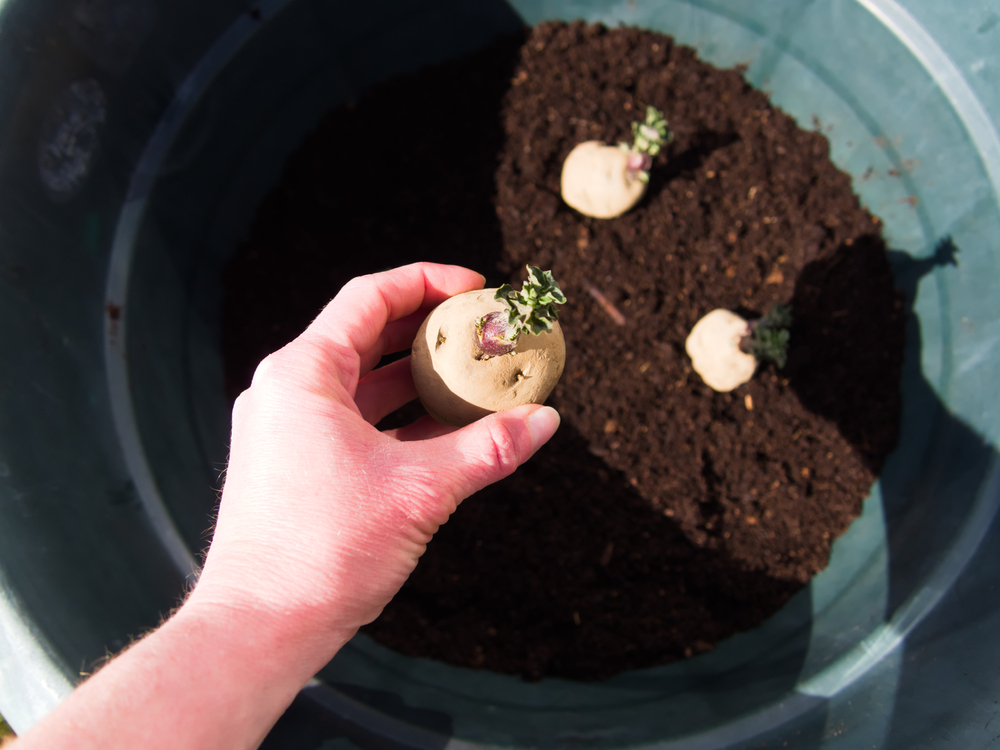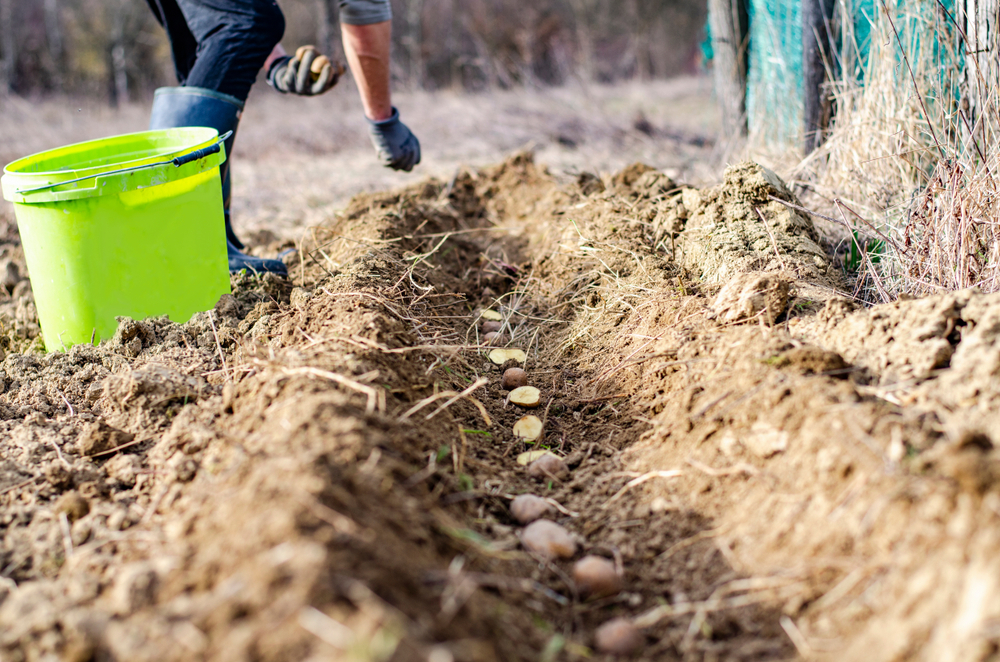Posted by Amber Williams on 14th Mar 2023
How to Plant Seed Potatoes

If you're thinking of starting an allotment or vegetable garden this year, then potatoes are a great beginner-friendly option for you to begin with. They're easy to grow, easy to prepare, and provide an impressive yield that makes it all worth it!
If you're a true newbie and you're wondering how to plant seed potatoes, when to plant them, or even what a seed potato is, then you're in luck, because we're diving in headfirst to give you top tips and expert wisdom.
The different types of potatoes
Potatoes come under three main categories: First earlies, second earlies, and main crop.
First earlies are sown and harvested the earliest in the year. Second earlies are the second earliest, and maincrop are mid-season growers. Every potato variety will lay under one of these three categories - and it's important to know which before planting them.
When to Plant Potatoes
Image: Chitted potatoes being planted in containers
Potatoes can be planted in March, April, and May (depending on what type they are). First earlies can be planted from mid to late March, second earlies from early to mid-April, and maincrop potatoes from mid to late April.
This all depends on where you live, though. If you live somewhere cold, then they should be planted slightly later, and vice versa for mild regions. Potatoes grown in containers can be planted earlier as well.
How to Plant Seed Potatoes
Before you plant first early potatoes, it's worth taking the time to 'chit' them. This is essentially where you keep seed potatoes indoors until they start to grow tiny nodules - typically about six weeks before you plan on planting them outside. You can learn all about how to chit your potatoes in our handy guide.
Prepare your planting site by digging in lots of organic matter like compost or rotted manure into the soil. Traditionally, the planting method goes something like this for all varieties:
Dig a narrow trench in the soil that’s about 12cm deep. Space each tuber along this trench 30cm apart for earlies and 37cm apart for main crops. Space each trench 60cm apart for earlies and 75cm apart for main crops.
As the crops grow, you will need to perform a process called ‘earthing up’. When shoots reach 20cm tall, use a rake, spade or even a hoe to mound the soil up and around the base of these shoots, covering them to about halfway. This is to ensure that sunlight doesn’t reach the tubers, as it can turn the potatoes green which means they’re toxic and cannot be eaten.
You will need to continue this process as the plants continue to grow, leaving a few centimetres of stems above ground each time. 
Image: Potatoes being laid out in trenches, ready to plant
How to Grow Potatoes in Bags and Containers
If you don't have the space for several long trenches in soil, you needn't miss out. Potatoes can be grown in any type of growing bag or container! They're quite forgiving in that way, although the yield will be slightly smaller.
Ensure any container has drainage holes and can be lifted without breaking when it's full of soil. We have an in-depth guide that helps you learn how to grow potatoes in bags and containers here.
When to Harvest Potatoes
So, you've chitted your potatoes and you've planted them out - even been earthing them up and they're coming along perfectly! It's now time to harvest them. You can harvest potatoes from June-October, but this will depend on which type they are.
First earlies: June - July
Second earlies: July - August
Main crop: August - October
Cut potatoes plants to soil level. Gently dig the potatoes out of the ground with a gardening fork. First and second earlies don’t store well, so dig them up as and when you’d like to eat them. First and second earlies can be dug up when they’re still flowering, but maincrops should be harvested once the plants have started to turn yellow and die back.
Potatoes to Know and Grow 
Image: Potatoes in soil after being dug up
Wondering which types of potatoes to grow? Here's a list of our favourites to start off with based on whether they're first earlies, second earlies, or maincrop types.

